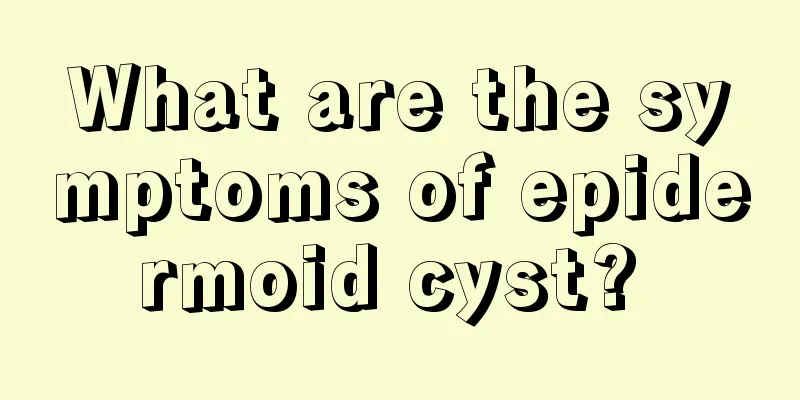What diseases can be transmitted by sharing chopsticks

|
Many people are very concerned about sharing chopsticks to eat. In fact, this is a very bad behavior. It is best to use your own chopsticks to eat alone, otherwise it will cause some infectious diseases. Because the incidence of infectious diseases is becoming higher and higher, the most common one is that you will be infected with some influenza, which is simply called influenza. Influenza (flu) Causes Influenza is an acute infectious disease caused by influenza viruses transmitted through the respiratory tract. Influenza viruses exist in the patient's oral and nasal secretions and are transmitted through droplets. The disease is highly contagious and can cause local epidemics or a global pandemic. symptom ⑴ Most cases of onset are sudden, with obvious systemic symptoms and mild respiratory symptoms. ⑵ First there is chills, followed by high fever, which can reach 39-40℃, accompanied by headache, body aches and weakness. ⑶Gastrointestinal symptoms: nausea, diarrhea, etc. ⑷ For severe cases, the condition is serious at the beginning, with obvious symptoms such as high fever, confusion, neck stiffness, convulsions, etc.; some elderly and weak people have serious symptoms from the beginning. Prevention ⑴ Patients with severe high fever, headache, and body aches can use compound aspirin, chloramphenicol and other drugs or add physical cooling. ⑵ In more serious cases, intravenous infusion and antibiotic treatment are required. ⑶ Treatment with Chinese medicine: Take cold and fever-reducing granules (Isatis indigotica, Isatis root, Forsythia suspensa) 2-4 times a day, one packet each time. ⑷ Reduce group activities during the epidemic period; isolate and treat patients as soon as possible; pay attention to indoor ventilation; and encourage wearing masks in shared places. Poliomyelitis Causes Most polio patients are children, and it is an infectious disease caused by the polio virus. There are a large number of viruses in the patient's feces, and the virus is often transmitted through contact with the patient's feces or contaminated utensils. During the first 5 days of illness, it can also be transmitted by respiratory secretions. Because the virus invades nerve tissue in different parts of the body, the sick child may suffer from paralysis in the same part of the body. symptom The incubation period is about 5 to 14 days, and symptoms vary in severity. Most children do not develop symptoms, or only have fever, headache, sore throat, vomiting, diarrhea, etc. for 1 or 2 days, but do not develop paralysis. Some children develop fever again 1-6 days after the fever subsides, which is called "double-peak fever". The children sweat a lot, feel generally unwell, vomit, and have muscle pain all over the body. The children are unwilling to raise their heads, do not want to be held, or cannot sit steadily. Most of them are not conscious. On the 3rd or 4th day of fever, the child's hands and feet become soft and weak and cannot move, which is called "flaccid paralysis." Lower limb flaccidity is more common and may be unilateral or bilateral and asymmetrical. Prevention ⑴ Patients in the acute phase must be hospitalized for isolated treatment and rest in bed. ⑵When the condition is stable, acupuncture and massage treatment should be carried out in time. ⑶ For isolated patients, the eating utensils and excrement shall be disinfected during the isolation period starting from the date of onset of the disease. When polio breaks out in the summer, patients with fever or upper respiratory tract infection symptoms should not go to the swimming pool. For those who have been exposed, placental globulin or immunoglobulin G can be injected within 3 days after exposure. Mumps Causes It is an acute infectious disease caused by mumps virus. The virus exists in the saliva of the patient and is mainly transmitted to others through droplets. The virus invades the human body and causes swelling of the parotid or submandibular glands. This disease is highly contagious. symptom The incubation period of this disease is about 14-21 days. The patient first felt swelling and pain in the parotid gland under one ear, and pain when chewing. 2?/FONT>3 days later, the parotid gland on the other side also became swollen and painful. The swelling was centered on the earlobe, and the parotid glands on the edge were also swollen and painful. |
<<: What diseases can formaldehyde cause
>>: What diseases can be transmitted by eating together
Recommend
What are the methods of using tampons
Tampons are one of the essential items for female...
What is the sour smell under the armpit?
The sour smell under the armpits is actually a co...
What should I do if lymphoma has spread?
Lymphoma is a common malignant tumor and a system...
What is 100 degrees of myopia
Humans observe things in the outside world mainly...
How to drain pus if you don’t squeeze the pimple?
Acne will show signs of pus in the later stages o...
What to use to wash urethritis, the cleaning method is very important
Some friends who suffer from urethritis think tha...
The harm of whitening injections
It is natural for women to love beauty. Every wom...
What is the difference between mold and fermentation
Generally, we recommend not eating moldy food, bu...
What glasses should I wear for astigmatism
Astigmatism is mainly caused by not paying attent...
What are the daily precautions and prevention methods for small cell lung cancer
In life, we should take daily preventive and heal...
Dizziness and fatigue in early pregnancy
Pregnancy is a great yet difficult process. Pregn...
How to remove mildew spots on shoes
Shoes are something we need in our daily life. Th...
Can thyroid cancer be treated with radionuclide without surgery?
Whether radionuclide therapy can be used for thyr...
What are the functions and effects of Imperata root?
In fact, Imperata root is widely used because it ...
Can I take painkillers for toothache
Everyone says that toothache is not a disease, bu...









